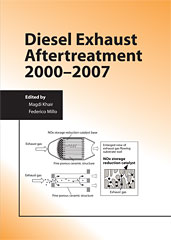Technical Paper
Effects of Different Geometries of the Cylinder Head on the Combustion Characteristics of a VVA Gasoline Engine
2013-09-08
2013-24-0057
Two different modifications of the baseline cylinder head configuration have been designed and experimentally tested on a MultiAir turbocharged gasoline engine, in order to address the issue of the poor in-cylinder turbulence levels which are typical of the Early-Intake-Valve-Closing (EIVC) strategies which are adopted in Variable Valve Actuation systems at part load to reduce pumping losses. The first layout promotes turbulence by increasing the tumble motion at low valve lifts, while the second one allows the addition of a swirl vortex to the main tumble structure. The aim for both designs was to achieve a proper flame propagation speed at both part and full load. The experimental activity was initially focused on the part load analysis under high dilution of the mixture with internal EGR, which can allow significant further reductions in terms of pumping losses but, on the other hand, tends to adversely affect combustion stability and to increase cycle-to-cycle variations.


